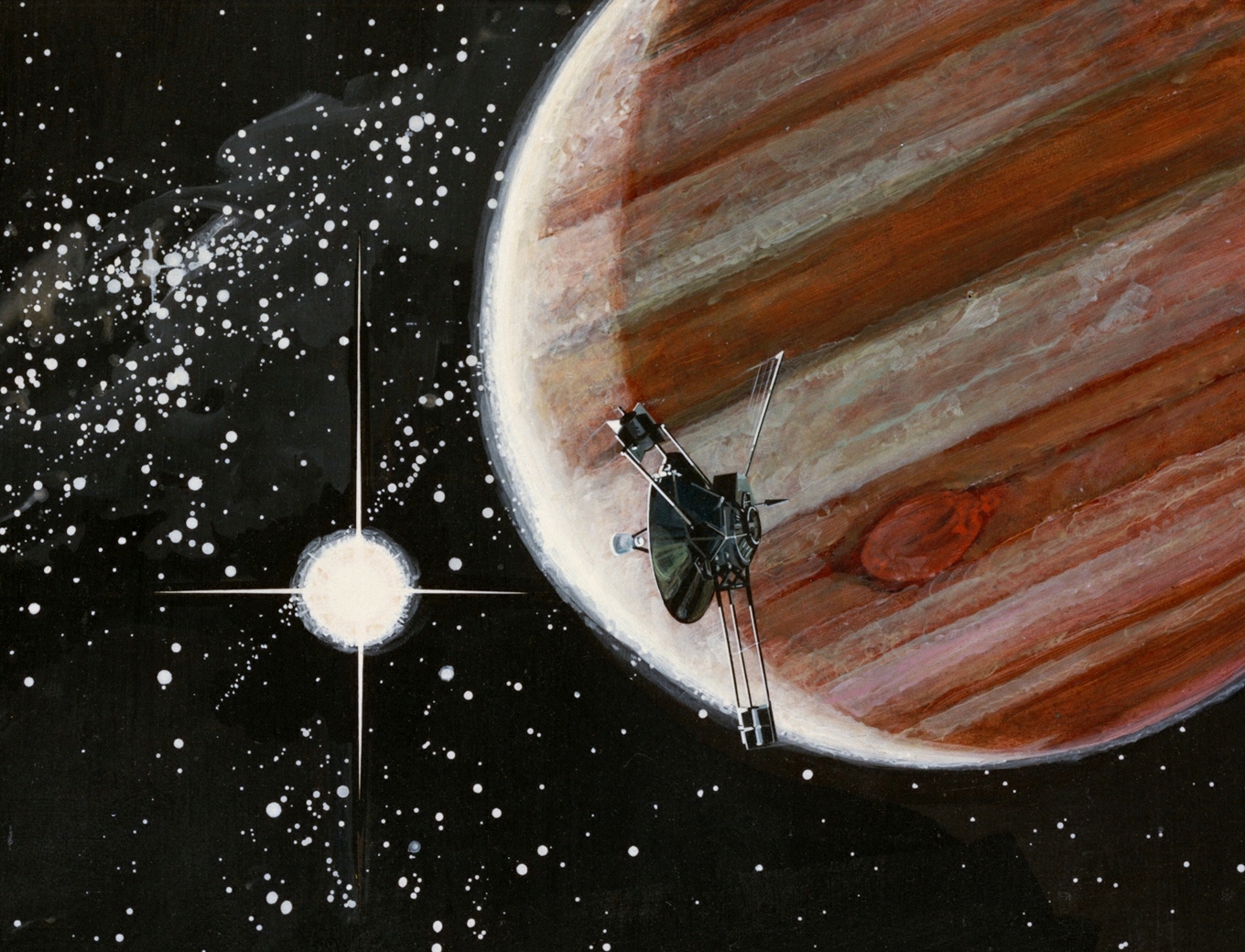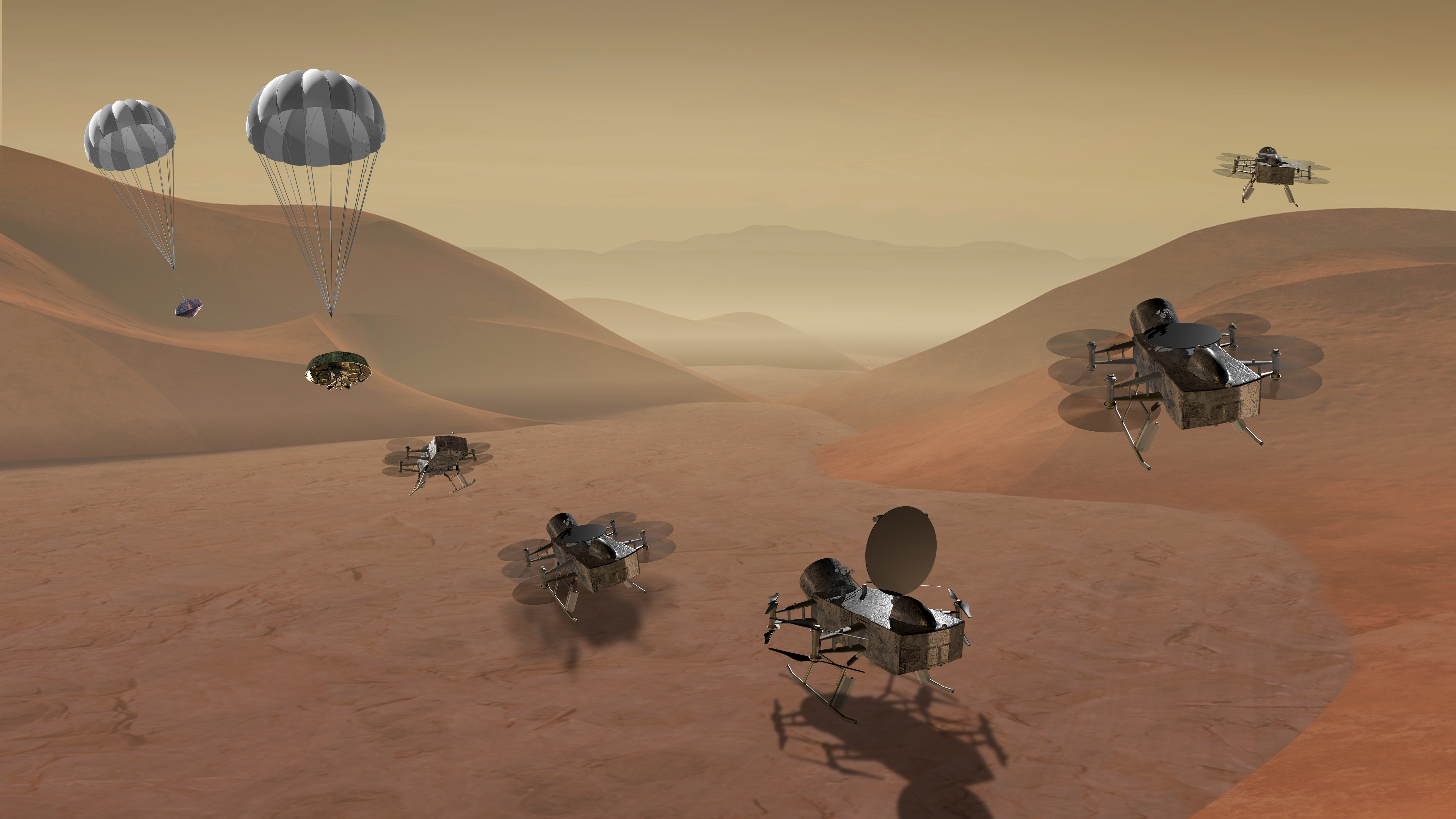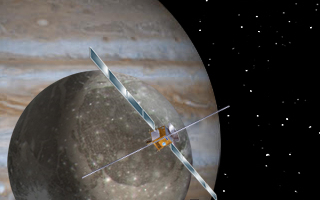|
List Of Missions To The Outer Planets
A total of nine spacecraft have been launched on missions that involve visits to the outer planets; all nine missions involve encounters with Jupiter, with four spacecraft also visiting Saturn. One spacecraft, ''Voyager 2'', also visited Uranus and Neptune. The nine missions include two; ''Ulysses (spacecraft), Ulysses'' and ''New Horizons'', whose primary objectives are not related to the outer planets, but which flew past Jupiter to gain gravity assists en route to a polar orbit around the Sun, and Pluto—at the time of its launch considered an outer planet—respectively. ''Cassini–Huygens'' also flew past Jupiter for a gravity assist on its Mission to explore Saturn. Only three of the missions to the outer planets have been orbiters: ''Galileo (spacecraft), Galileo'' orbited Jupiter for eight years, while ''Cassini'' orbited Saturn for thirteen years. ''Juno (spacecraft), Juno'' has been orbiting Jupiter since 2016. Summary Jupiter Six spacecraft have been launched ... [...More Info...] [...Related Items...] OR: [Wikipedia] [Google] [Baidu] |
Outer Planets
The Solar SystemCapitalization of the name varies. The International Astronomical Union, the authoritative body regarding astronomical nomenclature, specifies capitalizing the names of all individual astronomical objects but uses mixed "Solar System" and "solar system" structures in theinaming guidelines document. The name is commonly rendered in lower case ('solar system'), as, for example, in the ''Oxford English Dictionary'' an''Merriam-Webster's 11th Collegiate Dictionary''. is the gravitationally bound system of the Sun and the objects that orbit it. It formed 4.6 billion years ago from the gravitational collapse of a giant interstellar molecular cloud. The vast majority (99.86%) of the system's mass is in the Sun, with most of the remaining mass contained in the planet Jupiter. The four inner system planets— Mercury, Venus, Earth and Mars—are terrestrial planets, being composed primarily of rock and metal. The four giant planets of the outer system are substan ... [...More Info...] [...Related Items...] OR: [Wikipedia] [Google] [Baidu] |
Pioneer 10
''Pioneer 10'' (originally designated Pioneer F) is an American space probe, launched in 1972 and weighing , that completed the first mission to the planet Jupiter. Thereafter, ''Pioneer 10'' became the first of five artificial objects to achieve the escape velocity needed to leave the Solar System. This space exploration project was conducted by the NASA Ames Research Center in California. The space probe was manufactured by TRW Inc. ''Pioneer 10'' was assembled around a hexagonal bus with a diameter parabolic dish high-gain antenna, and the spacecraft was spin stabilized around the axis of the antenna. Its electric power was supplied by four radioisotope thermoelectric generators that provided a combined 155 watts at launch. It was launched on March 3, 1972, at 01:49:00 UTC (March 2 local time), by an Atlas-Centaur expendable vehicle from Cape Canaveral, Florida. Between July 15, 1972, and February 15, 1973, it became the first spacecraft to traverse the asteroid belt. ... [...More Info...] [...Related Items...] OR: [Wikipedia] [Google] [Baidu] |
NASA
The National Aeronautics and Space Administration (NASA ) is an independent agency of the US federal government responsible for the civil space program, aeronautics research, and space research. NASA was established in 1958, succeeding the National Advisory Committee for Aeronautics (NACA), to give the U.S. space development effort a distinctly civilian orientation, emphasizing peaceful applications in space science. NASA has since led most American space exploration, including Project Mercury, Project Gemini, the 1968-1972 Apollo Moon landing missions, the Skylab space station, and the Space Shuttle. NASA supports the International Space Station and oversees the development of the Orion spacecraft and the Space Launch System for the crewed lunar Artemis program, Commercial Crew spacecraft, and the planned Lunar Gateway space station. The agency is also responsible for the Launch Services Program, which provides oversight of launch operations and countdown management f ... [...More Info...] [...Related Items...] OR: [Wikipedia] [Google] [Baidu] |
Dragonfly (spacecraft)
''Dragonfly'' is a planned spacecraft and NASA mission, which will send a robotic rotorcraft to the surface of Titan, the largest moon of Saturn. It would be the first aircraft on Titan and is intended to make the first powered and fully controlled atmospheric flight on any moon, with the intention of studying prebiotic chemistry and extraterrestrial habitability. It will then use its vertical takeoffs and landings (VTOL) capability to move between exploration sites.Dragonfly: Exploring Titan's Prebiotic Organic Chemistry and Habitability E. P. Turtle, J. W. Barnes, M. G. Trainer, R. D. Lorenz, S. M. MacKenzie, K. E. Hibbard, D. Adams, P. Bedini, J. W. Langelaan, K. Zacny, and the Dragonfly Team ''Lunar and Planetary Science Conference 2017'' [...More Info...] [...Related Items...] OR: [Wikipedia] [Google] [Baidu] |
Jupiter Icy Moons Explorer
The Jupiter Icy Moons Explorer (JUICE) is an interplanetary spacecraft in development by the European Space Agency (ESA) with Airbus Defence and Space as the main contractor. The mission will study three of Jupiter's Galilean moons: Ganymede, Callisto, and Europa (excluding the volcanically active Io; Io is not an icy moon) all of which are thought to have significant bodies of liquid water beneath their surfaces, making them potentially habitable environments. The spacecraft is scheduled to launch in April 2023 and will reach Jupiter in July 2031 after four gravity assists and eight years of travel. In December 2034, the spacecraft will enter orbit around Ganymede for its close up science mission, becoming the first spacecraft to orbit a moon other than the moon of Earth. The selection of this mission for the L1 launch slot of ESA's Cosmic Vision science programme was announced on 2 May 2012. Its period of operations will overlap with NASA's ''Europa Clipper'' mission, lau ... [...More Info...] [...Related Items...] OR: [Wikipedia] [Google] [Baidu] |
Europa Clipper
Europa Clipper (previously known as Europa Multiple Flyby Mission) is an interplanetary mission in development by NASA comprising an orbiter. Planned for launch in October 2024, the spacecraft is being developed to study the Galilean moon Europa through a series of flybys while in orbit around Jupiter. This mission is a scheduled flight of the Planetary Science Division, designated a Large Strategic Science Mission, and funded under the Planetary Missions Program Office's Solar System Exploration program as its second flight. It is also supported by the new Ocean Worlds Exploration Program. ''Europa Clipper'' will perform follow-up studies to those made by the ''Galileo'' spacecraft during its eight years in Jupiter orbit, which indicated the existence of a subsurface ocean underneath Europa's ice crust. Plans to send a spacecraft to Europa were initially conceived with projects such as ''Europa Orbiter'' and ''Jupiter Icy Moons Orbiter'', in which a spacecraft would be inje ... [...More Info...] [...Related Items...] OR: [Wikipedia] [Google] [Baidu] |
617 Patroclus
617 Patroclus ( ) is a large binary Jupiter trojan asteroid. It is a dark D-type asteroid and a slow rotator, due to the 103-hour orbital period of its two components. It is one of five Jovian asteroids targeted by the ''Lucy'' space probe, and is scheduled for a flyby in 2033. Patroclus was discovered on 17 October, 1906, by astronomer August Kopff at the Heidelberg Observatory in Germany, and was named after Patroclus in Greek mythology. It was the second trojan to be discovered and the only member of the Trojan camp named after a Greek figure, as the convention of naming one 'camp' after Greek figures of the Trojan War and the other after Trojan figures had not yet been established. Patroclus was long thought to be one of the largest Jupiter trojans, with a diameter on the order of 150 km. However, in 2001 it was discovered to be a binary asteroid of two similarly sized objects. The name ''Patroclus'' is now assigned to the larger component, some 110–115 km in diam ... [...More Info...] [...Related Items...] OR: [Wikipedia] [Google] [Baidu] |
21900 Orus
21900 Orus is a Jupiter trojan from the Greek camp, approximately in diameter, and a target of the ''Lucy'' mission to be visited in November 2028. The dark Jovian asteroid belongs to the 100 largest Jupiter trojans and has a rotation period of 13.5 hours. It was discovered on 9 November 1999, by Japanese amateur astronomer Takao Kobayashi at his private Ōizumi Observatory in Gunma Prefecture, Japan, and later named Orus after a slain Achaean warrior from the ''Iliad''. Orbit and classification ''Orus'' is a dark Jovian asteroid orbiting in the leading Greek camp at Jupiter's Lagrangian point, 60 ° ahead of its orbit in a 1:1 resonance . It is also a non-family asteroid in the Jovian background population. It orbits the Sun at a distance of 4.9–5.3 AU once every 11 years and 7 months (4,240 days; semi-major axis of 5.13 AU). Its orbit has an eccentricity of 0.04 and an inclination of 8 ° with respect to the ecliptic. The body's observation arc begins ... [...More Info...] [...Related Items...] OR: [Wikipedia] [Google] [Baidu] |
11351 Leucus
11351 Leucus is a mid-sized Jupiter trojan from the Greek camp, approximately in diameter. It is a target of the ''Lucy'' mission, scheduled for a fly by in April 2028. The assumed D-type asteroid is an exceptionally slow rotator with a rotation period of 466 hours. It was discovered on 12 October 1997 by the Beijing Schmidt CCD Asteroid Program (SCAP) at Xinglong Station in the Chinese province of Hebei, and later named after the Achaean warrior Leucus from Greek mythology. Orbit and classification ''Leucus'' is a dark Jovian asteroid in a 1:1 orbital resonance with Jupiter. It is located in the leading Greek camp at Jupiter's Lagrangian point, 60 ° ahead of its orbit . It is also a non-family asteroid in the Jovian background population. It orbits the Sun at a distance of 5.0–5.6 AU once every 12 years and 2 months (4,440 days; semi-major axis of 5.29 AU). Its orbit has an eccentricity of 0.06 and an inclination of 12 ° with respect to the ecliptic. Th ... [...More Info...] [...Related Items...] OR: [Wikipedia] [Google] [Baidu] |
15094 Polymele
15094 Polymele is a primitive Jupiter trojan from the Greek camp, approximately in diameter. It is a target of the ''Lucy'' mission with a close flyby planned to occur in September 2027. It was discovered on 17 November 1999, by astronomers with the Catalina Sky Survey at Mount Lemmon Observatory, Arizona, in the United States. The P-type asteroid has a rotation period of 5.9 hours and highly elongated shape. It was named after Polymele from Greek mythology, the wife of Menoetius and the mother of Patroclus. In 2022, it was reported to have a companion asteroid approximately in diameter. Orbit and classification Polymele is a Jupiter trojan asteroid orbiting in the leading Greek camp at Jupiter's Lagrangian point, 60 ° ahead of the Gas Giant's orbit ''(see Trojans in astronomy)''. It orbits the Sun at a distance of 4.7–5.7 AU once every 11 years and 9 months (4,289 days; semi-major axis of 5.17 AU). Its orbit has an eccentricity of 0.09 and an inclination of ... [...More Info...] [...Related Items...] OR: [Wikipedia] [Google] [Baidu] |
3548 Eurybates
3548 Eurybates ( ) is a carbonaceous Jupiter trojan from the Greek camp and the parent body of the Eurybates family, approximately in diameter. It is a target to be visited by the ''Lucy'' mission in August 2027. Discovered during the second Palomar–Leiden Trojan survey in 1973, it was later named after Eurybates from Greek mythology. The C/P-type asteroid belongs to the 60 largest Jupiter trojans and has a rotation period of 8.7 hours. ''Eurybates'' has one known satellite, named ''Queta'', that was discovered in images taken by the Hubble Space Telescope in September 2018. Discovery ''Eurybates'' was discovered on 19 September 1973, by Dutch astronomers Ingrid and Cornelis van Houten at Leiden, on photographic plates taken by Tom Gehrels at the Palomar Observatory in California, United States. In 1951, it was first observed as ' at the Goethe Link Observatory, extending the asteroid's observation arc by 22 years prior to its official discovery observation at Palo ... [...More Info...] [...Related Items...] OR: [Wikipedia] [Google] [Baidu] |
Lucy (spacecraft)
''Lucy'' is a NASA space probe on a twelve-year journey to eight different asteroids, visiting a main belt asteroid as well as seven Jupiter trojans, asteroids which share Jupiter's orbit around the Sun, orbiting either ahead of or behind the planet. All target encounters will be flyby encounters. The Lucy spacecraft is the centerpiece of a US$981 million mission. On 4 January 2017, Lucy was chosen, along with the ''Psyche'' mission, as NASA's Discovery Program missions 13 and 14 respectively. The mission is named after the Lucy hominin fossils, because study of the trojans could reveal the "fossils of planet formation": materials that clumped together in the early history of the Solar System to form planets and other bodies. The hominid was named after the 1967 Beatles song "Lucy in the Sky with Diamonds". The spacecraft carries a disc made of lab-grown diamonds for its L'TES instrument. Overview ''Lucy'' was launched from Cape Canaveral SLC-41 on 16 October 2021, a ... [...More Info...] [...Related Items...] OR: [Wikipedia] [Google] [Baidu] |









